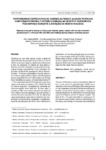Use este identificador para citar ou linkar para este item:
http://www.alice.cnptia.embrapa.br/alice/handle/doc/974678Registro completo de metadados
| Campo DC | Valor | Idioma |
|---|---|---|
| dc.contributor.author | MAFFILI, V. V. | pt_BR |
| dc.contributor.author | TORRES, C. A. A. | pt_BR |
| dc.contributor.author | PROSPERI, C. P. | pt_BR |
| dc.contributor.author | FONSECA, J. F. da | pt_BR |
| dc.contributor.author | PONTES, R. A. M. | pt_BR |
| dc.contributor.author | MORAES, E. A. de | pt_BR |
| dc.contributor.author | COSTA, E. P. da | pt_BR |
| dc.contributor.author | SANTOS, A. D. F. | pt_BR |
| dc.date.accessioned | 2013-12-27T11:11:11Z | pt_BR |
| dc.date.available | 2013-12-27T11:11:11Z | pt_BR |
| dc.date.created | 2013-12-27 | pt_BR |
| dc.date.issued | 2005 | pt_BR |
| dc.identifier.citation | Veterinária Notícias, v. 11, n. 1, p. 75-80, 2005. | pt_BR |
| dc.identifier.uri | http://www.alice.cnptia.embrapa.br/alice/handle/doc/974678 | pt_BR |
| dc.description | Resumo: Objetivou-se com este estudo avaliar o efeito da administração da gonadotrofina coriônica humana (hCG) no quinto e vigésimo dia do ciclo estral sobre a taxa de gestação de cabras da raça Alpina e Saanen, durante a estação de acasalamento induzida por fotoperíodo artificial. Foram utilizados 151 animais, sendo 85 da raça Alpina e 66 da Saanen. Do total, 110 foram submetidas à monta natural e 41 à inseminação artificial. Após a identificação do estro e acasalamento ou inseminação, as fêmeas foram divididas ao acaso, em dois tratamentos:T1 = 1mL de solução salina intramuscular no quinto e vigésimo dia após a cobertura e T2 = 250 UI de hCG no mesmo esquema. A gestação foi verificada por ultra-sonografia trans-retal aos 35 dias após a cobertura. Não houve efeito da administração do hCG sobre a taxa de gestação, taxa de parição e número de fetos nascidos (P>0,05). As diferentes raças empregadas neste estudo também não influenciaram os parâmetros estudados. Independentemente da aplicação do hCG, houve decréscimo significativo na taxa de gestação quando se empregou a inseminação artificial (P<0,05). Sob as condições deste estudo, a administração de hCG no quinto e vigésimo dia do ciclo estral não apresenta qualquer efeito sobre a taxa de gestação de fêmeas caprinas das raças Alpina e Saanen. Abstract: The aim of this study was to evaluate the effect of the human chorionic gonadotropin (hCG) administration in the five and 20 days of the estrous cycle on rate of gestation of goats of the Alpine and Saanen breeds, during of the breeding season induced by artificial fotoperiod. Hundred-fifty-one females were used, 85 of Alpine and 66 of Saanen breeds. The total of 151, 110 were submitted to mating and 41 the artificial insemination. After the identification of the estrus and mating, the females were divided at random, in two trataments: T1 = 1mL of saline solution intramuscular and T2 = 250 UI of hCG, in the fifth and twentieth day after the mating. The gestation was verified by trans-rectal ultrasound to the 35 days after the mating. There were no differences (P>0,05) of the hCG administration on gestation rate, parturition rate and number of born foetus. The difference breeds used in this study didn?t influence the studied parameters. Independently of the application of hCG, there was significant decrease in the gestation rate when the artificial insemination was used (P <0,05). Under the conditions of this study, the hCG administration in the fifth and twentieth day of the estrous cycle estral doesn?t present any effect on gestation rate of goats of the Alpine and Saanen breeds. | pt_BR |
| dc.language.iso | por | pt_BR |
| dc.rights | openAccess | pt_BR |
| dc.subject | Monta natural | pt_BR |
| dc.subject | HCG | pt_BR |
| dc.subject | Raça Alpina | pt_BR |
| dc.subject | Raça Saanen | pt_BR |
| dc.subject | Mating | pt_BR |
| dc.subject | Gestation | pt_BR |
| dc.title | Performance reprodutiva de cabras Alpinas e Saanen tratadas com gonadotrofina coriônica humana no quinto e vigésimo dia pós-serviço durante a estação de monta induzida. | pt_BR |
| dc.type | Artigo de periódico | pt_BR |
| dc.date.updated | 2013-12-27T11:11:11Z | pt_BR |
| dc.subject.thesagro | Caprino | pt_BR |
| dc.subject.thesagro | Cabra | pt_BR |
| dc.subject.thesagro | Inseminação artificial | pt_BR |
| dc.subject.thesagro | Prenhez | pt_BR |
| dc.subject.thesagro | Acasalamento | pt_BR |
| dc.subject.thesagro | Gonadotrofina | pt_BR |
| dc.subject.thesagro | Reprodução | por |
| dc.subject.nalthesaurus | Goats | pt_BR |
| dc.subject.nalthesaurus | Reproduction | pt_BR |
| dc.subject.nalthesaurus | Artificial insemination | por |
| dc.subject.nalthesaurus | Pregnancy | por |
| dc.description.notes | Título em inglês: Reproductive performance of Alpine and Saanen goats treated with human chorionic gonadotrophin in the day fifth and 20th post matting during induzed breeding season. | por |
| riaa.ainfo.id | 974678 | pt_BR |
| riaa.ainfo.lastupdate | 2013-12-27 | pt_BR |
| dc.contributor.institution | VITOR VALÉRIO MAFFILI, UNIVERSIDADE FEDERAL DE VIÇOSA | pt_BR |
| dc.contributor.institution | CIRO ALEXANDRE ALVES TORRES, UNIVERSIDADE FEDERAL DE VIÇOSA | por |
| dc.contributor.institution | CLÁUDIO PORIES PROSPERI, UNIVERSIDADE FEDERAL DE VIÇOSA | por |
| dc.contributor.institution | JEFERSON FERREIRA DA FONSECA, CNPC | por |
| dc.contributor.institution | ROBERTA ALBUQUERQUE MACHADO PONTES, UNIVERSIDADE ESTADUAL PAULISTA | por |
| dc.contributor.institution | ELENICE ANDRADE DE MORAES, UNIVERSIDADE FEDERAL DE VIÇOSA | por |
| dc.contributor.institution | EDUARDO PAULINO DA COSTA, UNIVERSIDADE FEDERAL DE VIÇOSA | por |
| dc.contributor.institution | ANSELMO DOMINGOS FERREIRA SANTOS, UNIVERSIDADE FEDERAL DE VIÇOSA. | por |
| Aparece nas coleções: | Artigo em periódico indexado (CNPC)  | |
Arquivos associados a este item:
| Arquivo | Descrição | Tamanho | Formato | |
|---|---|---|---|---|
| APIPerformancereprodutivadecabrasAlpinas.pdf | 43,19 kB | Adobe PDF |  Visualizar/Abrir |









